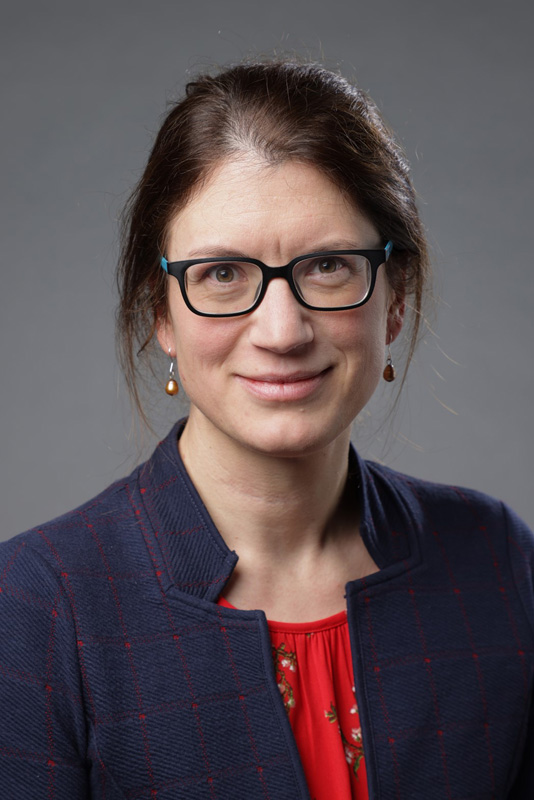
SPEAKER PROFILE |
 Prof Dr Ir Maartje M.C. Bastings Programmable Biomaterials Laboratory, Institute of Materials & Institute of Bioengineering, School of Engineering, EPFL Switzerland |
Super-Selective Biomaterials in Action
Abstract
Biomaterials have catalyzed a profound transformation of our lives over the last century. Following decades of scientific innovations, biomaterials have become smaller, yet their function increasingly complex. Where macroscopic materials interact with many cells at once, nanomaterials interact only with a fraction of the surface of a single cell. Consequently, where (specificity), when (selectivity), with how many (multivalency) and how strong (affinity) these interactions take place, becomes key in determining function. Engineering (super-) selective materials is particularly relevant to advance drug delivery, diagnostics and personalized medicine.
In the Programmable Biomaterials Laboratory (PBL), we are intrigued by the multivalency (strength in numbers) principle and wondered if the selectivity between materials and the bio-interface could be controlled via the engineering of tailored multivalent surfaces. We explored how structural rigidity vs flexibility and uniform control over nano-geometry interplay toward multivalent selectivity, using DNA as programmable engineering tool. These DNA-based supramolecular macromolecules self-organize into functional nanomaterials through natural base-pairing interactions, providing the advantage that all nanomaterials are exact molecular copies. This allows to explore a new parameter space toward the engineering of selectivity, compared to what is accessible for classic nanomaterials (e.g. polymers, lipids, composites, metals), where properties as size, shape, number of functional sites, and spacing of molecules are inherently an average of the ensemble.
In this talk, I will show that molecular flexibility at interfaces – “Interface Flexibility” – comes with a cost in selectivity and demonstrate that the selectivity of immune-modulating biomaterials can be controlled via mechanical and structural design. Excitingly, we achieved super-selective interactions when functional binding units were spatially and geometrically constrained, a new concept we defined as “Multivalent Pattern Recognition (MPR)”. I will show how geometric patterns play a central role in cellular communication and how materials can truly start to speak the cellular language when tailoring molecular patterns of interface molecules on DNA-based nanomaterials.
In the Programmable Biomaterials Laboratory (PBL), we are intrigued by the multivalency (strength in numbers) principle and wondered if the selectivity between materials and the bio-interface could be controlled via the engineering of tailored multivalent surfaces. We explored how structural rigidity vs flexibility and uniform control over nano-geometry interplay toward multivalent selectivity, using DNA as programmable engineering tool. These DNA-based supramolecular macromolecules self-organize into functional nanomaterials through natural base-pairing interactions, providing the advantage that all nanomaterials are exact molecular copies. This allows to explore a new parameter space toward the engineering of selectivity, compared to what is accessible for classic nanomaterials (e.g. polymers, lipids, composites, metals), where properties as size, shape, number of functional sites, and spacing of molecules are inherently an average of the ensemble.
In this talk, I will show that molecular flexibility at interfaces – “Interface Flexibility” – comes with a cost in selectivity and demonstrate that the selectivity of immune-modulating biomaterials can be controlled via mechanical and structural design. Excitingly, we achieved super-selective interactions when functional binding units were spatially and geometrically constrained, a new concept we defined as “Multivalent Pattern Recognition (MPR)”. I will show how geometric patterns play a central role in cellular communication and how materials can truly start to speak the cellular language when tailoring molecular patterns of interface molecules on DNA-based nanomaterials.
Bio
Maartje Bastings is a biomaterials engineer, who studied biomedical engineering and supramolecular chemistry with Bert (E.W.) Meijer at the Technische Universiteit Eindhoven, The Netherlands. During her training she undertook research internships in polymer synthesis and self-assembly with Craig J. Hawker at the Materials Research Laboratory of the University of California, Santa Barbara and structural protein engineering with David A. Tirrell at the California Institute of Technology, Pasadena. Following a 4-year postdoc position in DNA Nanotechnology with William M. Shih at Harvard University / Wyss Institute in Boston, she started as Tenure Track Assistant Professor at EPFL, leading the Programmable Biomaterials Laboratory (PBL) in 2017. She was promoted to Associate Professor with Tenure in 2024. Her lab uses the super-selectivity concept to engineer synthetic materials with remarkable (bio)activity profiles.